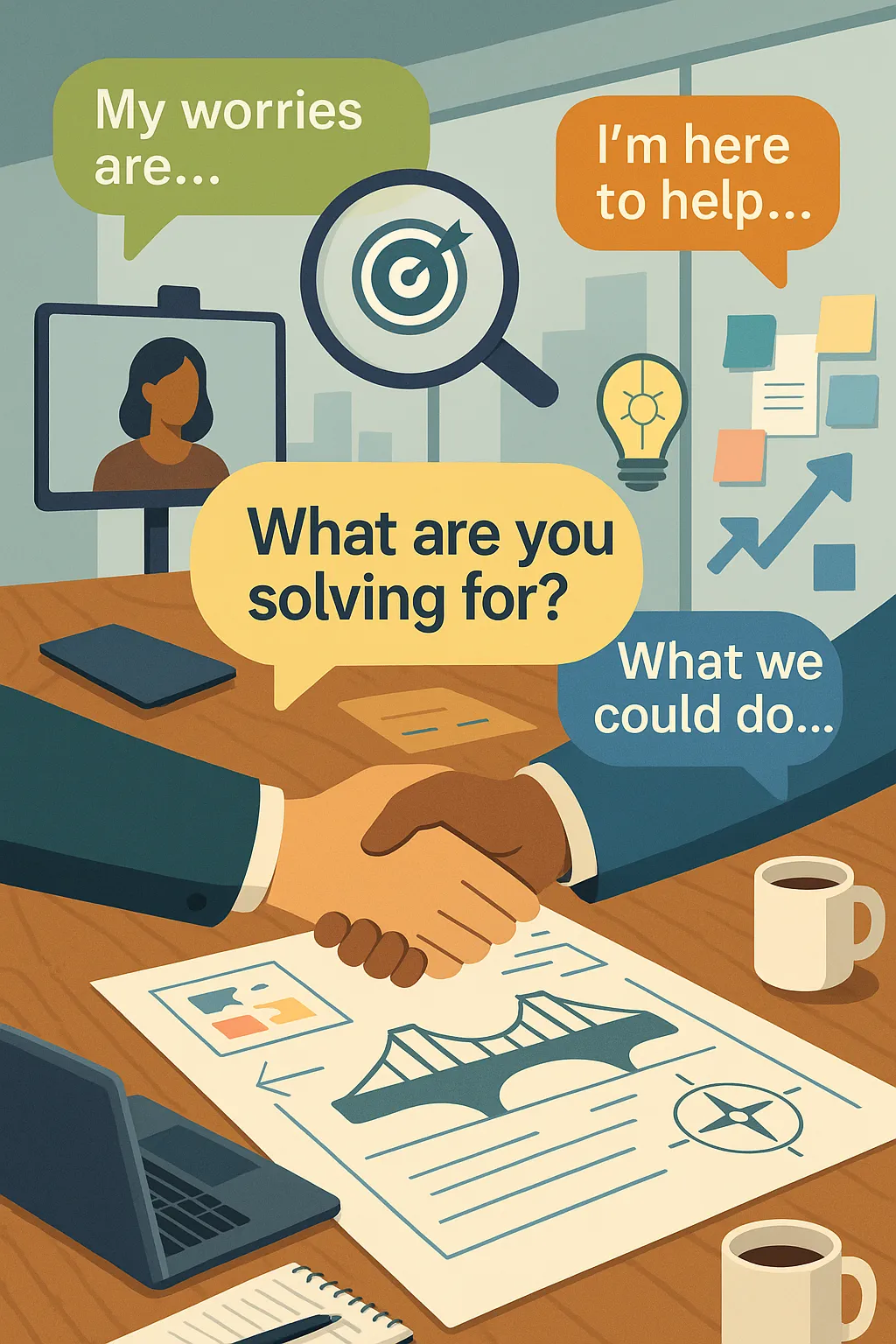What Are You Solving For? A Stakeholder Collaboration Framework

When deadlines loom, priorities shift, and opinions differ, it’s easy for project conversations to drift into a loop of misunderstandings.
The fastest way to bring alignment back? Ask a simple, powerful question:
“What are you solving for?”
This question does two things:
- It resets the conversation to the core objective.
- It reframes the discussion from personal preference to shared problem-solving.
Why this works
Stakeholders - whether they’re executives, cross-functional peers, or vendors, often approach challenges with their own context, pressures, and definitions of success.
By anchoring the conversation in “What are you solving for?”, you signal that you want to understand their real goal before suggesting solutions.
Once the goal is clear, you can use a set of conversational prompts to both empathize with their position and guide the conversation toward actionable outcomes.
The Stakeholder Response Framework
Below are five phrases that keep the dialogue open, respectful, and forward-moving.
1. “My worries are…”
Use this to express legitimate concerns without escalating conflict.
It’s not about stopping an idea, it’s about highlighting potential risks early.
“My worries are around the timing overlap with the Q4 launch. We may need more testing before this goes live.”
2. “My perception is…”
A way to share your current understanding while leaving room for correction.
This reduces assumptions and avoids the “you’re wrong” trap.
“My perception is that the vendor integration is still in the planning phase, so we might be too early to commit to hard launch dates.”
3. “What we could do…”
This is where you pivot toward solutions.
It signals a willingness to work together and moves the conversation out of the problem space.
“What we could do is set a phased rollout, starting with Loyalty members, while we finalize broader audience testing.”
4. “I’m here to help…”
A simple phrase that disarms tension and repositions you as a partner, not an obstacle.
“I’m here to help make sure the customer experience is seamless, so I’ll coordinate with our QA team to speed up feedback.”
5. “I see where you’re coming from…”
Acknowledging the other person’s perspective builds trust, even if you don’t agree.
“I see where you’re coming from, a faster time-to-market could help us capture early demand.”
Putting It All Together
Here’s how it works in a real conversation:
Stakeholder:
“We need to launch this feature by next Friday.”
You:
“What are you solving for?”
“I see where you’re coming from - speed matters in this situation.”
“My worries are about skipping accessibility testing.”
“My perception is that our compliance review usually takes at least a week.”
“What we could do is release to a beta audience and collect early feedback.”
“I’m here to help coordinate that so we can move quickly without introducing risk.”
Why This Matters
By blending curiosity (“What are you solving for?”) with structured empathy, you keep discussions solution - focused without ignoring potential risks.
It’s a framework that:
- Reduces defensive reactions
- Builds stronger cross-functional relationships
- Keeps projects moving forward - even under pressure
In the end, collaboration isn’t about winning an argument - it’s about solving the right problem, together.
Your move:
The next time you feel a conversation getting stuck, try this:
Pause, ask “What are you solving for?”, and use one of these prompts.
You might be surprised how quickly alignment follows.
